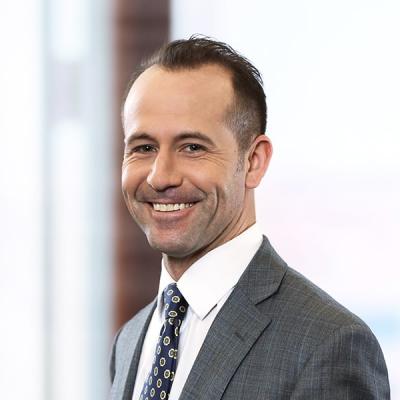General Plastic Industrial Co. v. Canon Kabushiki Kaisha: PTAB Explains Factors for Follow-On Petitions
On September 6, 2017, an expanded panel of the Patent Trial and Appeal Board issued an “informative” decision in General Plastic Industrial Co., Ltd, v. Canon Kabushiki Kaisha setting forth the Board’s framework for analyzing follow-on inter partes review (IPR) petitions. In response to five concurrent requests for rehearing, a panel of seven administrative patent judges reviewed the factors articulated in NVIDIA Corp. v. Samsung Elec. Co., IPR2016-00134, Paper 9 (PTAB May 4, 2016) and, in doing so, denied all five requests. While acknowledging that multiple petitions challenging the same patent may be permitted based on specific facts of each case, the Board explained that follow-on petitions run the risk of undue inequities and prejudices to patent owners, and petitioner’s submission of multiple, staggered petitions constituted “an inefficient use of the inter partes review process and the Board’s resources.”
Canon Kabushiki owns U.S. Patent Nos. 9,046,820 and 8,909,094 directed to a toner supply container for an image forming apparatus. In September 2015, Petitioner General Plastic filed IPR petitions challenging the ‘820 and ‘094 patents. In March 2016, the Board denied each petition on the merits. In July 2016, General Plastic filed five follow-on petitions against the same patents using both new art and arguments. Under 35 U.S.C. §§ 314(a) and 325(d), the PTAB has broad discretion in deciding whether or not to institute an IPR proceeding. As part of its discretion under § 314(a), the Board can evaluate follow-on IPR petitions by applying seven non-exhaustive factors as first articulated in NVIDIA, namely:
- whether the same petitioner previously filed a petition directed to the same claims of the same patent;
- whether at the time of filing of the first petition the petitioner knew of the prior art asserted in the second petition or should have known of it;
- whether at the time of filing of the second petition the petitioner already received the patent owner's preliminary response to the first petition or received the Board's decision on whether to institute review in the first petition;
- the length of time that elapsed between the time the petitioner learned of the prior art asserted in the second petition and the filing of the second petition;
- whether the petitioner provides adequate explanation for the time elapsed between the filings of multiple petitions directed to the same claims of the same patent;
- the finite resources of the Board; and
- the requirement under 35 U.S.C. § 316(a)(11) to issue a final determination not later than 1 year after the date on which the Director notices institution of review.
In considering factors (2) and (3), the Board noted that the new prior art used by Petitioner was the product of searches conducted after the Patent Owner had filed its Preliminary Responses to the first-filed petitions and after the Board had denied the first-filed petitions. The Board also addressed factors (4) and (5) and reasoned that General Plastic “provided no explanation why it could not have found [the] new prior art earlier – prior to filing the first-filed petitions – through the exercise of reasonable diligence.” In response to General Plastic’s argument that the Board’s approach would disqualify any later discovered prior art, the Board clarified that the standard is not whether the new art “should have been known” sooner, but rather why petitioner failed to uncover it when the first petition was filed and presumably after a reasonably diligent search was performed. The Board also stated that under factor (6), General Plastics was in effect asking the Board to wade through multiple, staggered petitions, which would have been “an inefficient use of the inter partes review process and the Board’s resources.”
Notably, the Board found that the new grounds presented in the follow-on petitions attempted to cure deficiencies previously identified in the earlier institution denials and that the Petitioner had also enjoyed the opportunity to study the Patent Owner’s preliminary responses to the initial petitions. The Board rejected Petitioner’s argument that the Board had acted contrary to the legislative purpose of 35 U.S.C. § 314(a) and misapplied the NVIDIA factors to create an improper de facto bar against all follow-on petitions filed after a decision on a first-filed petition. The Petitioner’s position that the Board should have relied exclusively on § 325(d) and had rendered that section “superfluous or meaningless” by the Board’s application of § 314(a) and the NVIDIA factors was also found unpersuasive. The Board stated that this case involved “sequential attacks” on the same claims, “with the opportunity [for the Petitioner] to morph positions along the way,” which was inequitable to the Patent Owner. The Board also highlighted the discretionary nature of both § 325(d) as well as any decision to institute an IPR under 35 U.S.C. § 314(a) and 37 C.F.R. § 42.108(a). Ultimately, the Board indicated that it was preventing a situation where “follow-on petitions would allow petitioners the opportunity to strategically stage their prior art and arguments in multiple petitions, using our decisions as a roadmap, until a ground is found that results in the grant of review.”
The decision serves as an important reminder to fully vet the art relied upon in post-grant petitions because second bites at the apple require justification. If a proposed ground falls short, petitioners planning to file follow-on petitions adding new prior art references should be ready to explain why the art was not previously uncovered to counter any potential prejudice to patent owners should the Board decide to institute.
Authors
Brad M. Scheller
Member
Peter J. Cuomo
Member



